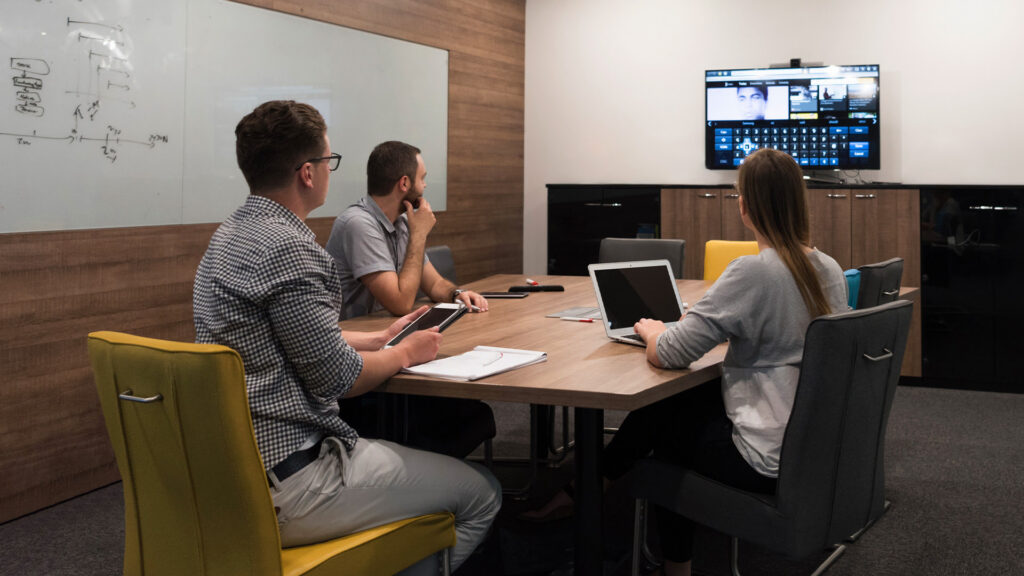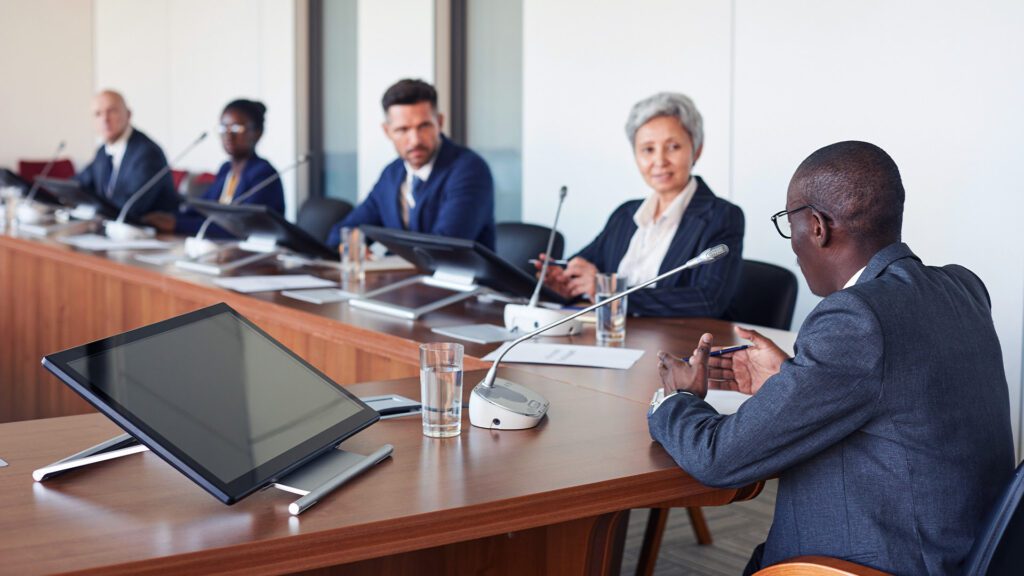Part II: Moving the needle of collaboration in your organization
In the first part of this blog, I talked about the “Most Important Meeting” and how you can:
- Incrementally improve the meeting by taking small steps to collaborate better – some incremental things are foolproof and cost nothing
- Make a bigger change by adding something that you aren’t doing today. Don’t be afraid of bigger steps – the benefits certainly outweigh the costs.
- Plan to learn from every step you take
Those activities were collectively the first step to better collaboration in your department or business.
If we dial back the time machine a little, the majority of “Most Important Meetings” which had remote participants were audio conference calls.
When conferencing tools like WebEx, and GoToMeeting came to market, meeting participants from different locations were able to share content parallel to the audio conference. These conferencing tools have continued to evolve by adding voice (instead of a parallel call) as well as video and some interactive annotation. They have allowed the “Most Important Meeting” to evolve from a “voice only” conference, to a “voice + content + video + annotation” meeting.
The increased conferencing technologies capability leads to a richer meeting experience for all participants – see this blog for more on increasing the richness of experience.
But I also stated that, even though it is important to have better collaboration in your “Most Important Meeting,” you can increase collaboration much more significantly by injecting a higher level of collaboration into the team activities that happen in between the “Most Important Meetings”.
Step 2: Team activities between the most important meetings
A lot more time and work effort is spent in between “Most Important Meetings” than having “Most Important Meetings”. So it stands to reason that if you can enable greater collaboration during the interaction between your team members for the work they do between meetings, you will be significantly accelerating collaboration in your organization.
Going from a collaborative crawl to a walk – remember the Crawl-Walk-Run (C-W-R) analogy from the last blog.
But, WebEx or GoToMeeting, as good as they are for meetings, are not the ideal tools for day-to-day collaboration between team members.
Why not?
Because they are tools that are designed for meetings. That is the strength of these tools – to facilitate meetings. All different kinds of meetings in WebEx’s case.
Meeting tools are:
- Oriented to a “One to Many” type meeting, where the owner of the meeting has most of the control of the meeting
- Are schedule driven events – book the meeting then hold the meeting
To move collaboration to the day-to-day interactions of your team members, you need to move from tools that are designed for meetings, to tools that are designed for ad hoc collaboration, i.e. Unified Communication (UC) tools.
GoToMeeting and WebEx don’t allow for ad hoc collaboration. They don’t have Presence, IM (Instant Messaging – outside of the chat function they enable in a meeting) or ad hoc voice or video calling. WebEx/GoToMeeting technology is designed for a meeting, not as a communication platform that supports day-to-day business.
A good UC platform like Jabber or Lync incorporates technology within it to facilitate meetings. It is one platform for all the real-time collaboration done within the organization. UC is the central piece of any Corporate Communications Framework, but if you are trying to move from a collaborative Crawl to a Walk, then don’t let the architecting of a framework slow you down. You are better off getting to a Walk by trying to walk versus planning on walking.
If you have a phone system already (a PBX), one way to move forward is to build on the phone system. But this will typically mean an upgrade of some sort if your phone system is more than a couple years old and it will mean you have to get more people involved in the decision. It is harder to start walking that way. The other thing that is noteworthy about the PBX is that with all the other tools available for real-time communications, the PBX just isn’t as important anymore and you shouldn’t continue to invest in it unless it ties in with your overall communications framework. See this blog by Marty Parker of UC Strategies – “How to Carve a PBX”.
Many people use Skype or other free consumer products for person-to-person interaction and they can work well – see this blog. But sometimes Skype is not reliable enough or scalable enough for your organization. Most people realize that when they start spending too much time managing the technology and not enough time focused on the business at hand, they aren’t saving anything by using free tools. When that happens you have to move up to higher quality UC tools that can provide a richer collaborative experience, e.g. Cisco’s Jabber, Microsoft’s Lync or another commercial UC solution.
The key to person-to-person collaboration
Whether you are using Skype or a more robust UC solution, to accelerate person-to-person collaboration, the most important piece to get right is the personal technology that plugs into the call.
What do I mean by that? Personal technology that enhances the audio and video experience by:
- Eliminating audio feedback / interference and provide good audio quality so people can hear and be heard. How?
- Use your iPhone/iPad or other ear buds plugged into your PC, tablet or mobile
- Add a USB personal audio device if you are working from a quiet place and don’t want to be tethered to a device. Cost ~ $100 to $150
- Enhancing the visual experience by making the video and content BIG
- All you need is a 2nd screen connected to your laptop or desktop which costs around $120
- Maintaining a good connection for quality and continuity of the call. Although a good connection is not “personal technology”, nothing disrupts a call more than fading in or out, or dropping the call and having to reconnect. You need a stable connection. This one is harder to put a price tag on, but there are different ways to come at the issue:
- Make sure you have lots of bandwidth and that normal bandwidth use by others on the same network isn’t choking your connection
- Use technology that is bandwidth friendly, e.g. uses less or is adaptable to bandwidth fluctuations
A personal audio device and a 2nd screen are the best investments you can make to significantly enhance person-to-person communication in your organization. Make the experience richer and people will be able to collaborate better.
If you can enable the person-to-person collaboration in between the “Most Important Meeting” you will have taken your organization from a collaborative crawl to a strong walk. And that is significant progress! I have experienced this in our own organization and seen it in others.
The next 2 steps to get to a Run are:
- Step 3: Extend Collaboration to Partners
- Step 4: Extend Collaboration to Customers
I’ll talk more about these in my next blog.







